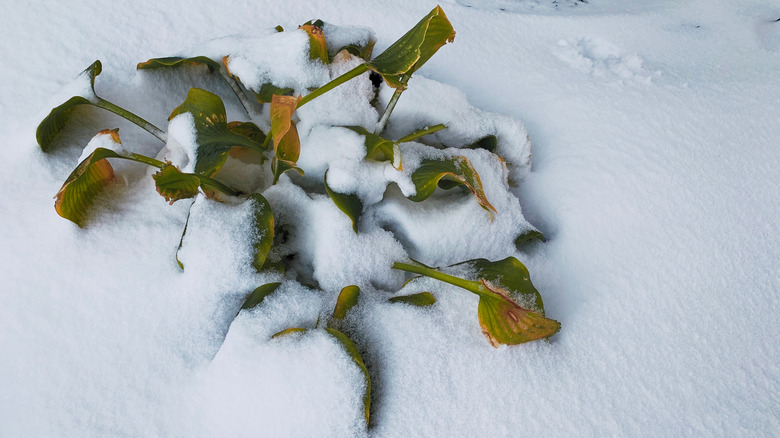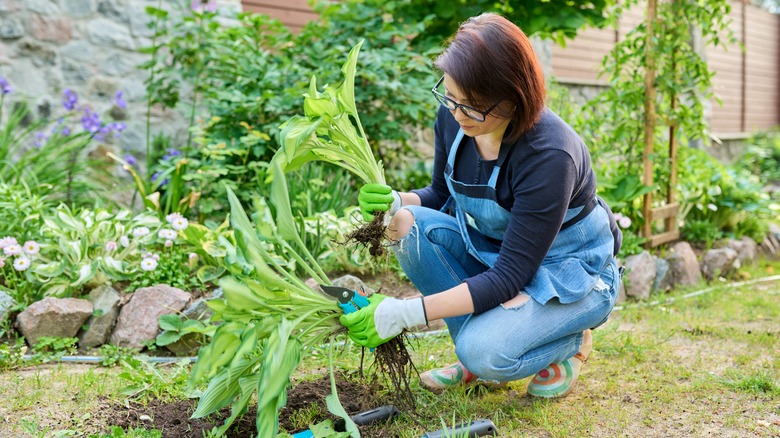The Essential Task For Healthy Hostas Before Winter Chills Hit The Garden
Sometimes, despite our best efforts, plants fail to thrive. If you've noticed a puny hosta in the yard, take action before the first frost sets in. The fall is the best time to transplant poor hostas and give them a different home in another part of the garden where they might fare better.
There are a few telltale signs that these normally hardy perennials might need to be moved. Hostas rank among the best plants for a shade garden, so if you've planted them in the sun, they're probably hurting. If you notice scorch marks on the leaves, then fall would be the best time to find a shadier spot in the garden for these herbaceous perennials. Now, shady spots aren't problem-free for all hostas, either. Sometimes a home beneath a tree can spell trouble, too. The plant can lose out to tree roots in the competition to get water and nutrients. Hostas also hate poorly-draining clay soil that cramps roots. Not to mention that pests can be an issue in some places, as voles occasionally cause hostas to collapse.
Hostas might also just get too crowded in one spot and then start to thin out. They're one of the plants you should divide this fall as well. The reason fall is such an ideal time to transplant hostas is that the weather is cooler, which means less stress for the plant. In most zones, you'll have enough time for new roots to grow before the really cold weather arrives.
Here's how to transplant hostas this fall
When moving hostas, be careful when digging up the roots to avoid transplant shock — don't cut into the rootball with the shovel. Also, keep in mind that big hostas can get surprisingly heavy, so be careful not to drop or break them when pulling them up. To make it easier for you and the plant, try watering beforehand. Just don't leave hostas out of the ground too long. Replant them as soon as you can on the same day. If you have to leave them above ground, keep the roots moist and the plant protected in the shade.
Make sure to pick a spot for the new hosta in the shade, partial shade, or even dappled sunlight. They like neutral or slightly acidic soil and good drainage as well. When planting, make a bigger hole than the root ball. Set the plant into the hole with a healthy topping of soil amendments mixed into the backfill. While hostas fare well in all kinds of climates, from USDA Plant Hardiness Zones 3 to 9, they're not immune to wide swings in temperature. So add mulch on top for some extra cold protection, such as ground bark or pine needles. Hostas will need regular watering until they fall dormant for the winter to help their roots grow.
If you're still itching to do some digging in the garden, no problem. Fall is also a great time to think about the perennials you might want to see bloom next year. To get your plan started, here are 7 perennials to plant in the fall for a vibrant spring garden.

